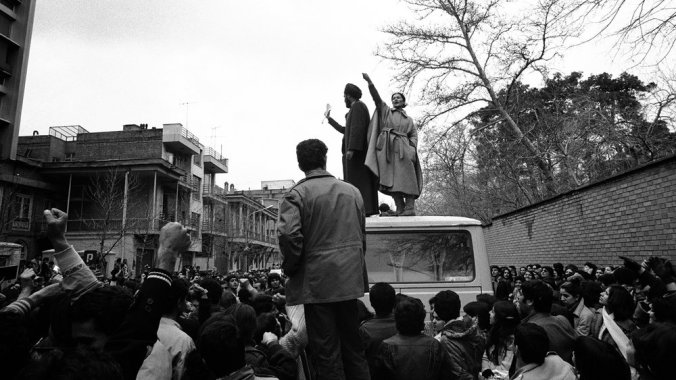Hengameh Golestan (b.1952) is a pioneer among Iranian women photographers. Born in Tehran, she has travelled extensively, documenting the lives of women in both Iran and Kurdistan. Being a woman has enabled her to gain access to intimate domestic settings, as well as the rituals, work and practices of her fellow females’ lives.
Hengameh’s work is also politically motivated. In 1991, for example, she assisted her husband on the project `Recording the Truth`, a film which examined the role of censorship in Iran.
Perhaps Hengameh’s most captivating photographic work, however, documented the public responses of women in Iran in the aftermath of the exile of the Shah and the rise of Ayatollah Khomeini’s Islamic Republic.

During the spring of 1979 more than 100,000 women began to gather on the streets of the capital. This huge upsurge of female unrest was in protest against the compulsory hijab ruling which was sanctioned by the new Islamic government. Women, who had previously been allowed to dress as they wished, were now being forced by the state to wear a headscarf at all times in public spaces. This was not only an issue of enforced dress codes, but for many was indicative of the dismissal of women’s human rights.

Hengameh, who was 27 at the time, documented this huge women’s protest, focusing on the scale, determination and bravery involved in such an uprising. The women protesters originated from all quarters of society, including nurses, artists, doctors, teachers, lawyers and domestic workers. The photographer spoke of the charged political atmosphere of the time, in which excitement and fear were never far away. Hengameh recalled documenting the protest, noting the difficulties of photographing such a huge crowd while also hiding from government officials. Nevertheless, Hengameh’s black and white imagery perfectly captures the vibrant resistance and intensity of the day.

The photographer’s work was only publicly exhibited in recent years and in London, long after Hengameh’s exile to Britain in 1984. Hengameh, in the meantime, has continued to work as a photojournalist.
The protest ended in violence for many women, some were even attacked and killed. It was also over without the freedoms so many had been inspired to demand. The photographs captured by Hengameh not only document the protest, but also the last day women could walk the streets uncovered, and the beginning of an ongoing era of hugely repressed human rights for the women of Iran.

Hengameh’s photography, however, captures a unique moment in Iranian history, reflecting the strength and resilience of Iranian women, while raising concerns about the fragility of all gained female human rights and ongoing subjugation of women throughout the world.